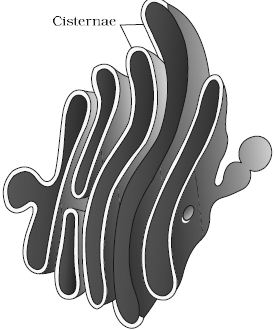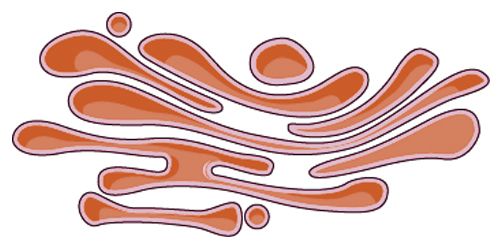Camillo Golgi (1898) first observed densely stained reticular structures near the nucleus. These were later named Golgi bodies after him. They consist of many flat, disc-shaped sacs or cisternae of 0.5 μm to 1.0 μm diameter (Figure).

These are stacked parallel to each other. The varied number of cisternae are present in a Golgi complex. The Golgi cisternae are concentrically arranged near the nucleus with distinct convex cis or the forming face and concave trans or the maturing face. The cis and the trans faces of the organelle are entirely different but interconnected.
The Golgi apparatus principally performs the function of packaging materials, to be delivered either to the intracellular targets or secreted outside the cell. Materials to be packaged in the form of vesicles from the ER fuse with the cis face of the Golgi apparatus and move towards the maturing face. This explains why the Golgi apparatus remains in close association with the endoplasmic reticulum. A number of proteins synthesized by ribosomes on the endoplasmic reticulum are modified in the cisternae of the Golgi apparatus before they are released from its trans face. Golgi apparatus is the important site of formation of glycoproteins and glycolipids.












